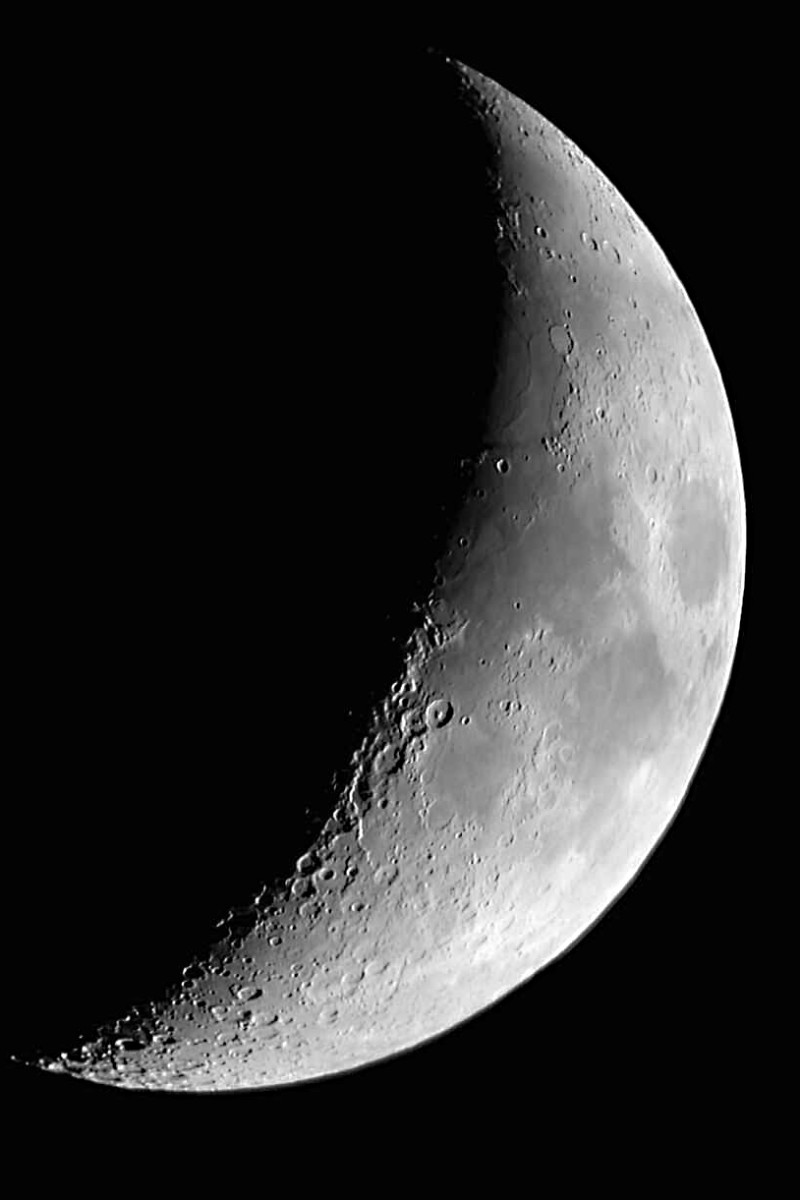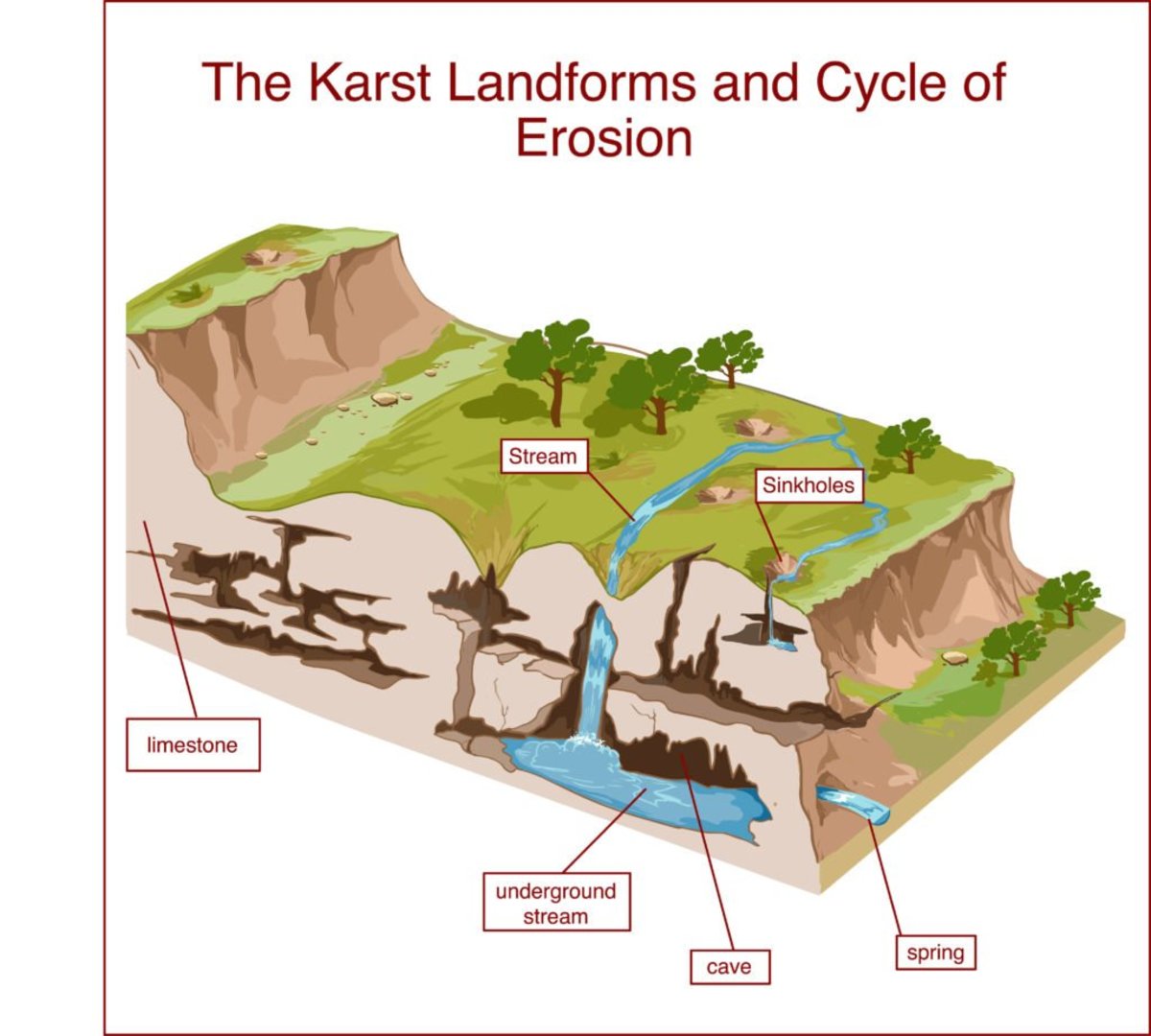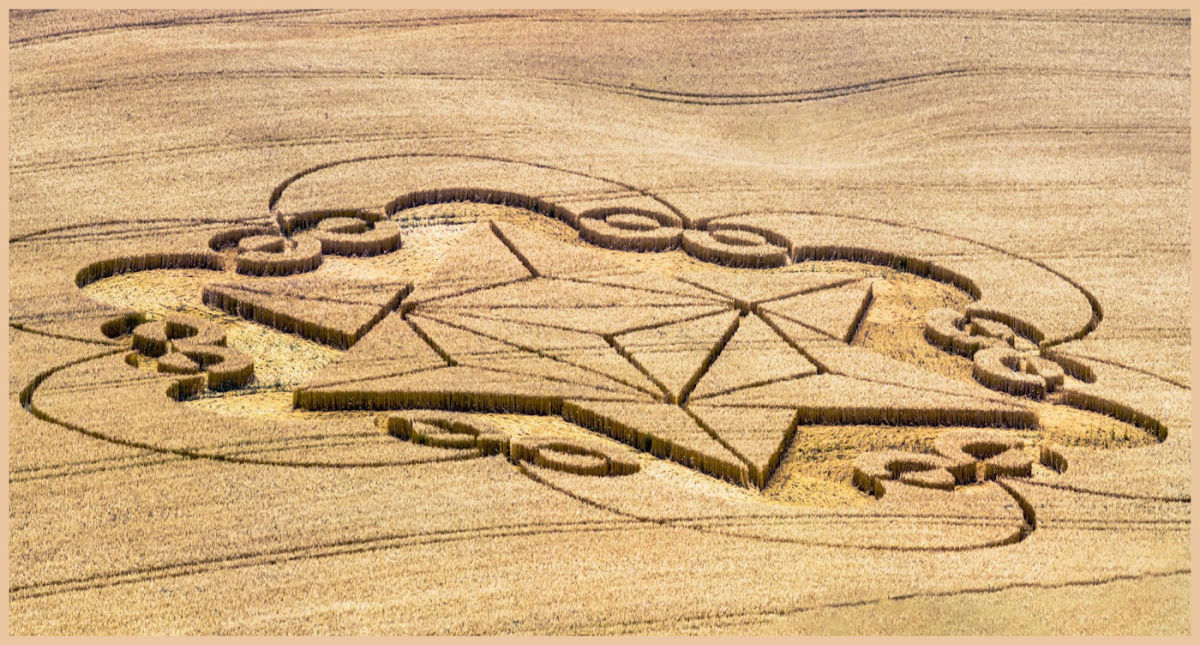Craters
Meteor Crater, aka Canyon Diablo Crater
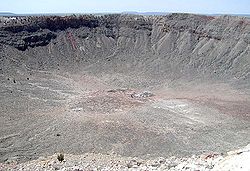
Meteor Crater is a meteor impact crater located about 43 miles east of Flagstaff, Arizona, near Winslow, Arizona in the Northeastern Desert of the United States.
The site was formerly known as the Canyon Diablo (Devil's Canyon) Crater, and scientists refer to it as the Barringer Crater, in honor of Daniel Barringer, who was the first to suggest it was created by meteor impact.
The crater is now owned privately by the Barringer family.
Meteor Crater-Landsat Photo from Space
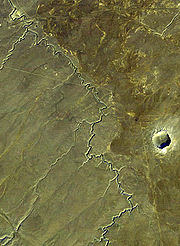
Meteor Crater is at an elevation of 5,709 feet above sea level (over a mile). It is about 4,000 feet across and about 570 feet deep. The rim of the crater rises 150 feet above the surrounding desert.
The crater was created about 50,000 years ago, during the Pleistocene era, when the local climate was much cooler and damper. The Northwest desert was an open grassland, dotted with woodlands inhabited by woolly mammoths, and giant ground sloths--and camels!
There probably weren't any human beings. Earliest traces of human habitation in this area dates from much later than this era.
Meteor Crater
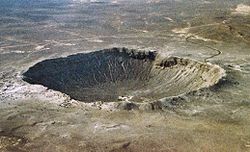
The nickel-iron meteorite that hit the earth was about 162 feet across, going at a speed of about 28,000 miles per hour. Scientists believe that about half of the metor's 330,000 tons vaporized before it hit the ground.

Initially, Meteor Crater had been ascribed to the actions of a volcano. In 1891, Grove Karl Gilbert, chief geologist for the US Geological Survey, investigated the site and concluded it was the result of a volcanic steam explosion, because he would have expected a magnetic anomaly underneath the crater, where the meteorite was buried.
In 1903, Daniel Barringer, a mining engineer and businessman, suggested it was an impact crater. Barringer's comapny, the Standard Iron Company, received a patent signed by Theodore Roosevelt for 640 acres (1 square mile) around the center of the crater, in 1903.
The Standard Iron Company researched the site and concluded it was indeed a meteor crater. These results were met with skepticism on the part of the scientific community; there was a reluctance at that time to consider the role of meteorites in terrestrial geology.
Impact physics was poorly understood; Barringer was unaware that most of the meteor vaporized on impact. Barringer spent 27 years looking for a large deposit of meteorite iron that wasn't there.
Meteor Crater
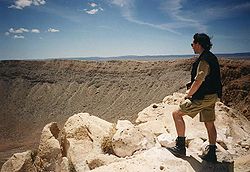
It wasn't until 1960 that research would confirm the site as a meteor impact crater. The key discovery was the presence of stishovite, a form of silica created only when quartz-bearing rocks have been severely shocked by the instantaneous overpressure of a meteor impact.
Meteor Crater today is a popular tourist attraction. It is not protected as a geological site or a national monument, because it is privately owned. It was designated as a National Natural Landmark in 1967. During the 1960's, NASA astronauts trained there for moon missions.
The Tenoumer Crater
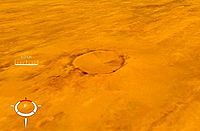
The Tenoumer crater is on a Precambrian peneplain with a thin layer of Pliocene sediments. It is located in Mauritania, in the Sahara Desert (Africa). It is about 4700 feet in diameter and about 330 feet deep. It is almost perfect circular, as seen from space.
The impact was estimated at 11,000 to 31, 000 years ago, placing it withing the Pleistocene era. The crater is believed to be an impact crater because of "basement rocks" found outside the crater in its immediate vicinity.
The Richat Structure
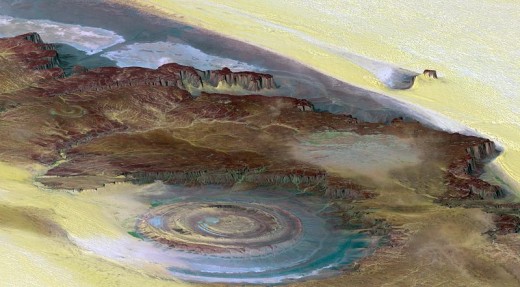
The Richat Structure is a prominent circle in the Sahara desert of Mauritania near Ouadane (Africa). It is a conspicuous bull's-eye, 30 miles across and has become a landmark for space shuttle crews,
Initially interpreted as a meteorite impact crater because of its circularity, it is now thought to be a symmetrical uplift, or inverted dome, of Paleozoic quartzite crystals laid bare by erosion from wind and sand.
One extremely odd thing about the Richat Structure: it lies in a direct line with two other large crates, the Tenoumer and Temimichat craters, both of which ARE impact craters.



